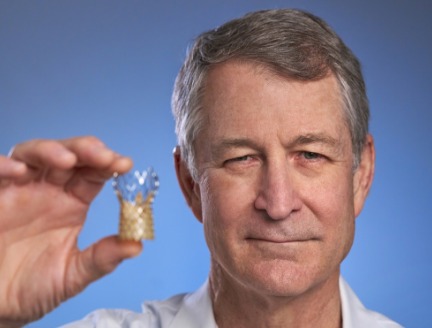


Since its global debut in 2018, the social media platform TikTok has taken the world—especially teenagers—by storm.
In fact, the video-sharing app prevails in popularity among 13- to 17-year-olds over veteran social media platforms, including Instagram, Snapchat, X (formally Twitter), and Facebook, according to a 2022 Pew Research Center survey.

Justin Aflatooni, MD
While overuse of social media has become a serious mental health concern in teens, Houston Methodist orthopedic resident Justin Aflatooni, MD, sees TikTok’s popularity as a unique opportunity for medical research.
“TikTok seems to be primarily used by teenagers, and people of that age group are commonly diagnosed with idiopathic scoliosis. So, when you put those two facts together, we thought that TikTok would be a good platform to learn more about scoliosis patients’ experiences,” Aflatooni explained.
Published in Taylor & Francis Online, Aflatooni’s research study involved searching TikTok using #scoliosis and analyzing 800 posts that met predetermined criteria.
The hypothesis was that the overall opinion about scoliosis among teenage TikTok users would be negative, but opinions about its treatment would be positive.
However, Aflatooni encountered unexpected results.
He found that most posts reflected positive themes about scoliosis (59.1%), with self-image being by far the most common subject in the posts (78.5%).
Topics Aflatooni expected to be discussed, such as pain, physical therapy treatment or mobility issues, were not significantly mentioned in the TikTok posts. Additionally, most scoliosis video posters were females.
Aflatooni offered several explanations for these results.
First, the positive themes about scoliosis could be due to users skewing the content of posts to avoid social ramifications, such as cyberbullying. Given the importance of ‘fitting in’ among teenagers, users might present their scoliosis diagnosis in a way that boosts their self-image, rather than tearing it down with candidness about pain, surgery, wearing a brace, and other topics that might be seen as socially less interesting.
The majority of scoliosis TikTok content being posted by females could be due to various reasons, including:
- Idiopathic scoliosis is more common in women than men;
- Females may prefer visually based social media sites while males prefer text-based sites, such as Facebook or X; and
- Females may be more likely to share personal topics on social media than males.
But what exactly do the study results mean? And how do they fit into a larger body of research?
“I think we can all agree that self-image in some form plays a role in our happiness,” Aflatooni said.

Adolescent idiopathic scoliosis is found in as many as 4 in 100 adolescents.

If providers are more aware of the association between scoliosis, self-image, and depression, they can provide better patient-centered care.

Justin Aflatooni, MD
Orthopedic Resident
Therefore, it’s crucial for providers to look for self-image concerns among teenage scoliosis patients to help prevent these negative feelings from progressing into something more serious.
Social Media in Research
Advantages
Data is globally, publicly, and readily available on a variety of topics across all patient populations that use it.
Useful for gathering qualitative, quantitative and mixed-methods data.
Disadvantages
Data can be biased or skewed depending on the intentions of the user.
Limited audience; not everyone uses social media.
Limited information. What users choose to post on social media may not be the information that researchers are seeking.
Social Media in Research
Advantages
Data is globally, publicly, and readily available on a variety of topics across all patient populations that use it.
Useful for gathering qualitative, quantitative and mixed-methods data.
Disadvantages
Data can be biased or skewed depending on the intentions of the user.
Limited audience; not everyone uses social media.
Limited information. What users choose to post on social media may not be the information that researchers are seeking.
“If providers are more aware of the association between scoliosis, self-image and depression, they can provide better patient-centered care,” Aflatooni explained. “For instance, if a scoliosis patient is eliciting signs of depression, then their provider can further evaluate them or refer them to another provider that specializes in mental health.”
Of course, there are other associated symptoms that can trigger mental health concerns among teenage scoliosis patients, such as pain and fear of undergoing surgery. But Aflatooni’s study suggests that providers should be more aware of self-image concerns in these patients.
Aflatooni also noted that it’s important to address mental health complications among patients since poor mental health can negatively impact healing.
“Overall, we hope providers can add the results of this study to their reservoir of tools for treating idiopathic scoliosis in teenage patients,” Aflatooni said. “Additionally, we’re proud that this study aligns with Houston Methodist’s I CARE Values by helping providers give the highest quality of care possible.”
Justin O. Aflatooni, Robert Loving, Brendan M. Holderread, Shari R. Liberman and Joshua D. Harris
Callie Rainosek
January 2024
Related Articles
Clinical Research
Antibody to Fight Silent Killers
Joining forces to block MFAP5 protein in killer cancers








